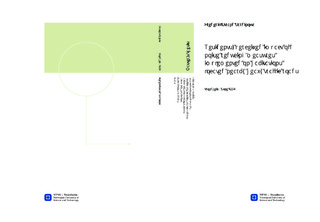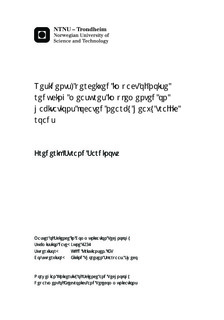| dc.contributor.advisor | Kristiansen, Ulf R | nb_NO |
| dc.contributor.advisor | Thoresen Skarpaas, Eivind | |
| dc.contributor.author | Sardinoux, Frederik Strand | nb_NO |
| dc.date.accessioned | 2014-12-19T13:48:10Z | |
| dc.date.accessioned | 2015-12-22T11:47:34Z | |
| dc.date.available | 2014-12-19T13:48:10Z | |
| dc.date.available | 2015-12-22T11:47:34Z | |
| dc.date.created | 2012-11-11 | nb_NO |
| dc.date.issued | 2012 | nb_NO |
| dc.identifier | 567041 | nb_NO |
| dc.identifier | ntnudaim:7607 | |
| dc.identifier.uri | http://hdl.handle.net/11250/2370627 | |
| dc.description.abstract | Road traffic has seen a constant augmentation these last decades. The noise it generates has grown more or less linearly with the traffic and has created a major environmental problem. It affects the human body in negative ways by engendering sleep disorders, stress and even cardiovascular diseases. The Norwegian government came with regulations to reduce the number of people exposed to high noise levels and many people have now had their habitation supplemented with noise-reducing measures. There is however a lack of researches made on these noise control measures in the indoor noise; especially on how the residents experience these modifications. A telephone-based survey is done in this research where 76 households have been selected on the parcel from Gardemoen to Biri on the new E6 in Norway. Between these habitations, the average outdoors and indoor noise levels are, respectively, 61dB and 34dB prior the installation of any noise reducing measures. The results, treated statistically using the software SPSS, are showing the nuisance degree experienced by the habitants for different noise levels both outdoors and indoors. Additionally, the subjective improvement of the noise situation felt by the habitants after the measures shows a rather different picture outdoor and indoor, as the amelioration is generally bigger inside the habitation.Indeed, while nearly 90% of the respondents felt annoyed to extremely annoyed outdoors only 50% showed the same nuisance levels after the noise control measures were installed. For the indoors situation 40% of the participants of the survey felt annoyed to very annoyed prior the measures while only 5% of them felt the same degree of annoyance after. Furthermore, while 42% were sleep disturbed and 50% experienced stress and 66% felt a reduction of their well-being only 13%, 20% and 18% felt the same health issues after the noise-measures were installed. Around half of the interviewees declared they were satisfied with both Sweco and Statens Vegvesen which were key firms for the planning and building of the measures along the chosen parcel. Finally, taking all this into account, it appears that 40% of the 76 selected residents are satisfied with the noise-reducing measures, 10% are unsatisfied and the rest is neutrally satisfied. | nb_NO |
| dc.language | eng | nb_NO |
| dc.publisher | Institutt for elektronikk og telekommunikasjon | nb_NO |
| dc.subject | ntnudaim:7607 | no_NO |
| dc.subject | MTKOM kommunikasjonsteknologi | |
| dc.subject | Lyd- og bildebehandling | |
| dc.title | Residents' perceived impact of noise reducing measures implemented on habitations located nearby heavy traffic roads | nb_NO |
| dc.type | Master thesis | nb_NO |
| dc.source.pagenumber | 95 | nb_NO |
| dc.contributor.department | Norges teknisk-naturvitenskapelige universitet, Fakultet for informasjonsteknologi, matematikk og elektroteknikk, Institutt for elektronikk og telekommunikasjon | nb_NO |

